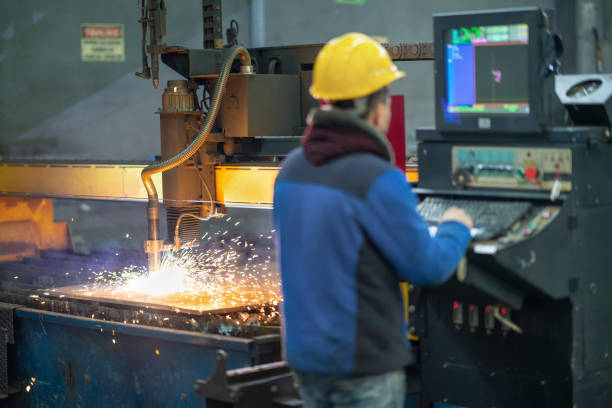Types of Laser Processes in the Fabrication Industry
📆 2021-03-23

Lasers play an evolving role in materials processing, from new product development to high-volume production. For all laser processes, laser light energy interacts with the material to transform it in several ways. Each transformation of the laser process is controlled by precisely adjusting the wavelength, power, duty cycle and repetition rate of the laser beam.
All materials have unique characteristics that determine how laser light interacts and consequently modifies the material. The most common processes for metals include:
-
Laser Cutting
Fiber laser light energy is easily absorbed by most metals, causing materials that are directly in the path of the laser light will quickly heat and melt. If the laser power is high enough, the laser beam will completely dissolve through the material. A burst of high pressure air is used to remove metal as it melts, resulting in smooth, straight edges with minimal heat affected zones. -
Laser Marking
Laser marking changes the appearance of metal surfaces without removing material. There are several types of laser marking that can be used for metals. Direct laser marking can be done with a fiber laser or a CO2 laser. In the direct marking process, laser light energy heats the metal surface causing it to oxidize. This oxidation causes the metal that has been hit by the laser light to darken, creating an indelible black mark.Fiber lasers can also be used to create bright, or polished, marks on metal surfaces. Metal can also be marked indirectly, either by adding a coating such as a metal marking compound, or by removing a coating such as paint. Laser marking can be used to convey information such as serial numbers or logos.
-
Laser Engraving
The strength of the fiber laser beam can be limited so as to engrave the material to a certain depth. It usually takes several passes for laser engraving. The common depth for laser engraving on metal is 75 to 125 microns. But removing this much metal in one go can cause melting or distortion. Therefore laser engraving is usually done in several passes. The laser engraving process can be used to create permanent identification marks that cannot be removed by heat or wear. -
Combined Process
The laser cutting, laser marking and laser engraving processes described above can be combined without having to remove or replace metal parts.
Conclusion
Those are some of the processes of using lasers in the fabrication industry, namely laser cutting, laser marking, laser engraving, and combined processes. If you need laser services in your business, Duta Laserindo Metal, provide laser services to meet your needs.
Another Magazines

Benefits of Moving from 2D to 3D CAD Workflows in Metal Fabrication
Benefits of adopting a 3D CAD workflow can outweigh the time and investment of resources for transformation and can continue to help fabricators compete better...
See more →
Technology and Development of Tube Laser Cutting
There are many advantages of laser tube cutting such as fast cutting speed, good flexibility, smooth cutting, also without wear....
See more →

